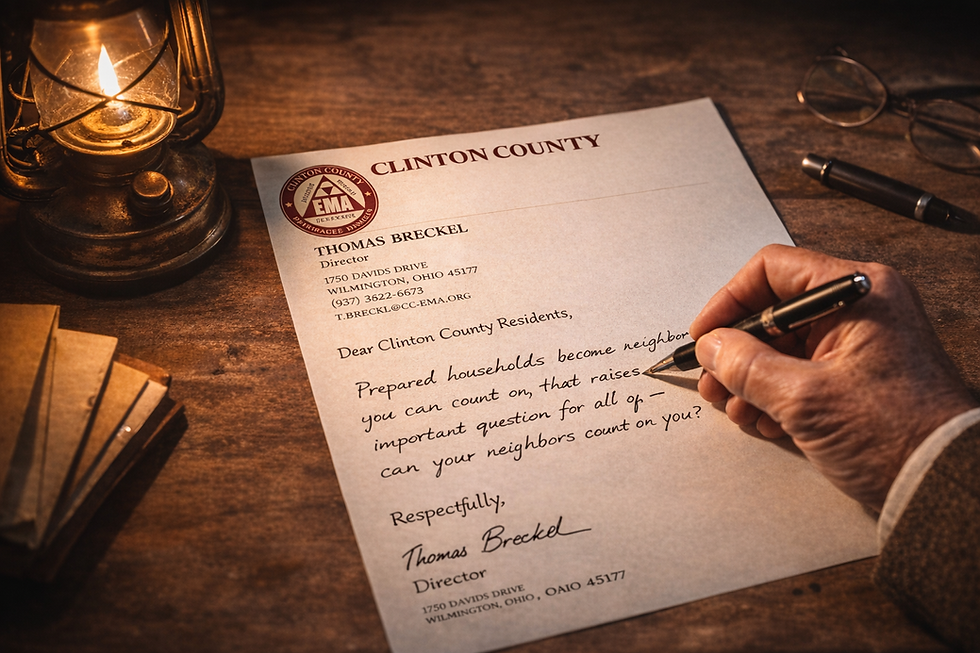Don’t Wait—Make a Family Plan
- Thomas Breckel

- Sep 7, 2025
- 2 min read
Emergencies rarely happen at a convenient time. Families may be at work, school, or traveling when a storm hits, a chemical spill occurs, or the power goes out. That’s why planning ahead is one of the most important steps you can take to keep your household safe.
Ready Rex says: “Don’t wait—make a plan!” 🦖
Why Planning Matters

In Clinton County, hazards like tornadoes, utility failures, severe winter weather, and hazardous materials incidents are among the top risks identified in the 2025 Hazard Mitigation Plan. When these events happen, communication systems can be disrupted, travel may be unsafe, and decisions must be made quickly. Families that already have a plan don’t waste time figuring out what to do—they act.
Steps to Build Your Family Emergency Plan
1. Write Down Emergency Contacts
Don’t just rely on your phone. Create a paper copy with numbers for:
Family members
Neighbors
Out-of-town contacts (helpful if local lines are overloaded)
Schools and workplaces
Keep a copy in your wallet, your kids’ backpacks, and your emergency kit.
2. Choose Two Meeting Places
Pick safe locations where your family can meet if you’re separated:
Near Home: A mailbox, neighbor’s porch, or other landmark close by.
Outside the Neighborhood: A library, church, or park where everyone knows to gather if the area around your home is unsafe.
3. Plan for Different Situations
Think about the specific hazards in Clinton County:
🌪 Tornadoes: Where is the safest shelter in your home?
❄ Winter Storms: What if you’re stranded on the road?
☣ Hazmat Accidents: Do you know how to shelter in place?
⚡ Utility Failures: How will you communicate if cell towers are down?
4. Include Everyone
Make sure kids know the plan in simple terms. Include older adults, people with disabilities, and pets. Everyone should know their role.
5. Practice, Practice, Practice
Set aside time once or twice a year to run a family drill. Practice texting your emergency contacts, walking to your meeting place, or sheltering in your safe spot.
Tools You Can Use
FEMA’s Family Emergency Communication Plan template is a free resource that helps you record important information.
Clinton County EMA provides updates through CCEA Alerts—sign up to ensure you receive timely warnings.
Ready Rex tip: “Keep your plan in a safe place, but where everyone can find it fast!”
Take Action This Week
Making a family emergency plan doesn’t take long, but it pays off in peace of mind. Gather your family, write down your contacts, and choose your meeting places. The sooner you plan, the more confident you’ll be when the unexpected happens.
Preparedness isn’t complicated—it’s just about being ready.
- - - END - - -
September is National Preparedness Month—a nationwide campaign to raise awareness about the importance of being ready for disasters and emergencies. It’s the perfect opportunity to take simple steps that strengthen your household’s safety, security, and resilience all year long.






Comments